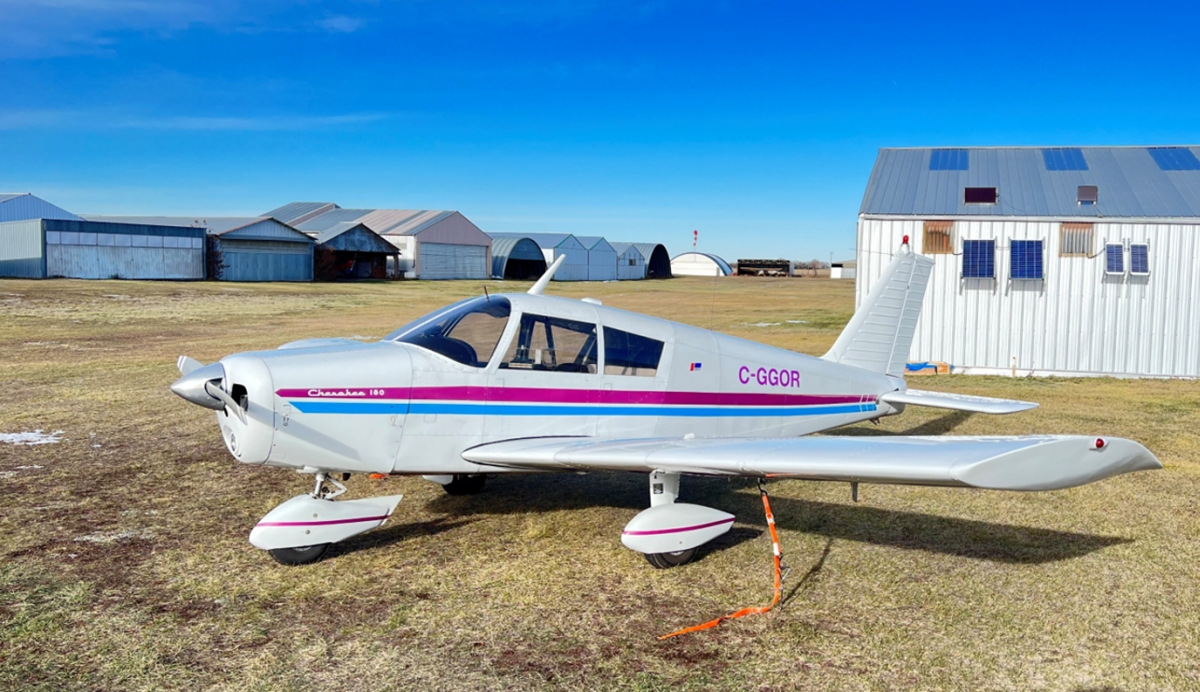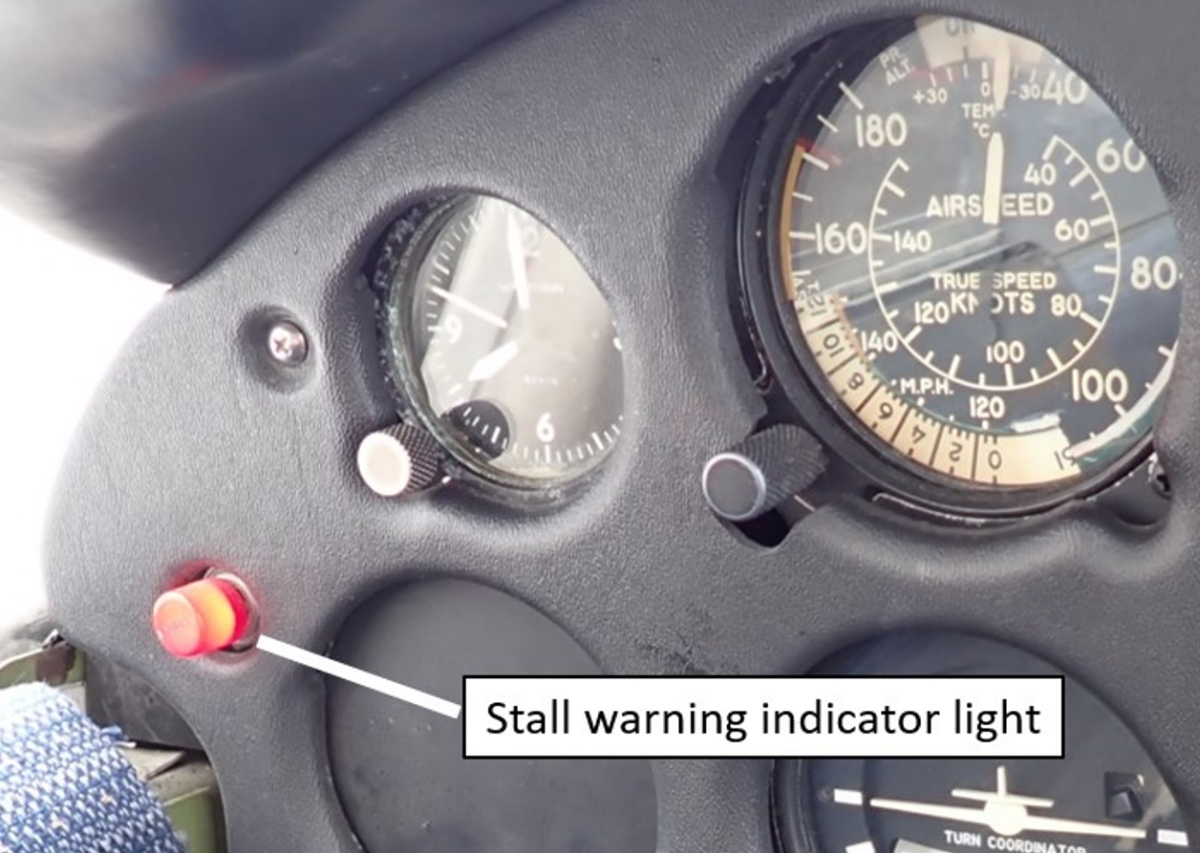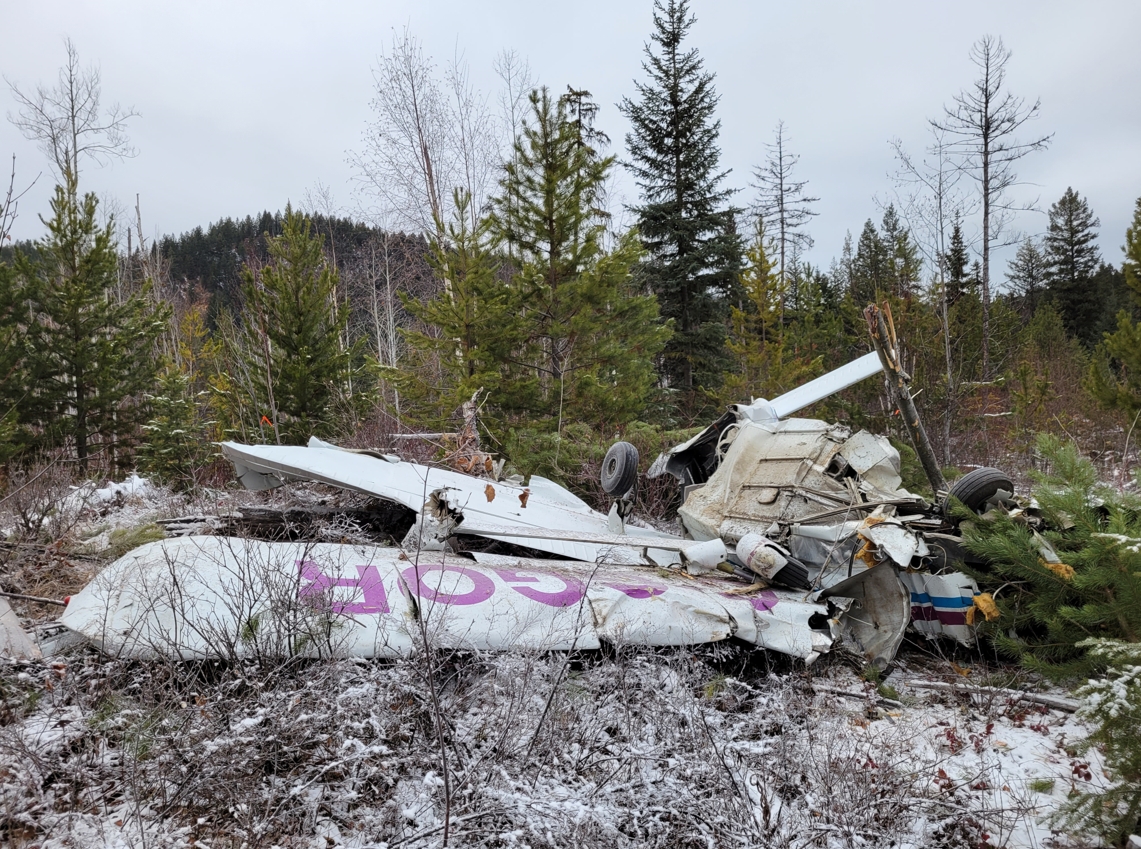Collision with terrain
Privately registered
Piper PA-28-180, C-GGOR
Brisco, British Columbia, 2 NM W
The Transportation Safety Board of Canada (TSB) investigated this occurrence for the purpose of advancing transportation safety. It is not the function of the Board to assign fault or determine civil or criminal liability. This report is not created for use in the context of legal, disciplinary or other proceedings. See Ownership and use of content. Masculine pronouns and position titles may be used to signify all genders to comply with the Canadian Transportation Accident Investigation and Safety Board Act (S.C. 1989, c. 3).
History of the flight
On 24 November 2023, the privately registered Piper PA-28-180 (Cherokee) aircraft (registration C-GGOR, serial number 28-1392) was conducting a recreational flight under visual flight rules from the Vanderhoof Aerodrome (CAU4), British Columbia (BC), to the Invermere Aerodrome (CAA8), BC, with only the pilot on board.
Shortly after departing CAU4, the aircraft appeared on radar at 1243All times are Pacific Standard Time (Coordinated Universal Time minus 8 hours). climbing through 3000 feet above sea level (ASL). At 1255, the aircraft levelled off at 9500 feet ASL. It flew east and was no longer visible on radar at 1331, near the north end of the Columbia Valley, BC. At 1421, the pilot communicated with a family member via text message that he was passing the village of Valemount, BC, and at 1508, that he was flying at an altitude of 11 500 feet ASL. The occurrence flight was conducted above 10 000 feet ASL for an unknown duration. At approximately 1554, the aircraft was observed in a vertical dive, approaching the ground at high speed approximately 2 nautical miles west of the community of Brisco, BC. The aircraft was reported to have executed an abrupt pull-up from the dive to a level attitude at an altitude of approximately 300 to 500 feet above ground level. The aircraft then reportedly had a wing and nose drop before impacting the ground in an inverted attitude (Figure 1).
![Figure 1. Known and presumed portions of the occurrence flight (known track [solid line] based on radar information; presumed track [dotted line] based on the pilot’s flight itinerary) (Source: Google Earth, with TSB annotations) Figure 1. Known and presumed portions of the occurrence flight (known track [solid line] based on radar information; presumed track [dotted line] based on the pilot’s flight itinerary) (Source: Google Earth, with TSB annotations)](/sites/default/files/2024-08/a23p0143-figure-01-EN.jpg)
A ground and air search was initiated after the crash was reported to emergency services through a call to 911. The Canadian Mission Control Centre did not receive an emergency locator transmitter (ELT) signal from the aircraft. Multiple search and rescue (SAR) helicopter sorties were flown in an attempt to locate the crash site, which was found more than 17 hours after the occurrence.
The pilot was fatally injured. The aircraft was destroyed. There was no post-impact fire.
Pilot information
The pilot held a private pilot licence – aeroplane, issued in July 2022, and a valid Category 1 medical certificate. The pilot held the appropriate licence for the flight in accordance with existing regulations. At the time of the occurrence, the pilot had accumulated approximately 243 hours total flight time, of which approximately 170 hours were completed in the occurrence aircraft.
Based on the aircraft’s journey logbook, the pilot had flown the occurrence aircraft between CAU4 and CAA8 on a regular basis over the previous 10 months and had flown the routing of the occurrence flight a total of 13 times. These flights had an average flight time of 4.1 hours. The routing from CAU4 to CAA8 made up approximately one fifth of the pilot’s total flight experience, with 53.4 hours of flight time logged.
There was no indication that the pilot’s performance during the occurrence flight was affected by pre-existing medical factors.
Weather information
The aerodrome nearest to the occurrence location that issues aerodrome routine meteorological reports is Golden Aerodrome (CYGE), BC, approximately 37 nautical miles to the northwest.
Based on the reports issued for CYGE at 1500 and 1600 on 24 November and, based on information provided by the Joint Rescue Coordination Centre in Victoria, BC, there was no cloud ceiling and the visibility was greater than 20 statute miles at the time and location of the occurrence. Weather was not considered to be a factor.
Aircraft information
The occurrence Piper PA-28-180 aircraft (Figure 2) was manufactured by the Piper Aircraft Corporation in 1963. It was equipped with a 180 hp Lycoming Engines O-360-A3A engine and a fixed-pitch propeller. It was not equipped with a flight data recorder or a cockpit voice recorder, nor was it required to be by regulation.

Fuel
The pilot had a history of fuelling the aircraft with 91-octane gasoline (both boat and automotive), commonly known as MOGAS. The aircraft owner’s handbook requires that the aircraft be fuelled with aviation-grade fuel.Piper Aircraft Corporation, Cherokee D PA-28-180 Owner’s Handbook (Issued in November 1967, Revised in January 1973), Section V: General maintenance, p. 38. In order to operate the aircraft with other than aviation-grade fuel, such as MOGAS, a supplemental type certificate (STC) is required. An STC for using automotive gasoline with the occurrence aircraft’s airframe and engine is available but requires mechanical modification to the original aircraft’s fuel system. The occurrence aircraft’s technical records available to investigators did not indicate that this STC had been completed. The records maintained by the STC provider did not show that the STC had been performed on the occurrence aircraft. Additionally, a physical examination of the aircraft wreckage determined that the modifications required by the STC had not been completed.
The aircraft was being operated using MOGAS during the occurrence flight; however, it could not be determined if this was a contributing factor to the outcome.
Maintenance
The aircraft’s last annual inspection had been completed on 28 March 2023.
An airworthiness directiveTransport Canada, Airworthiness Directive No. CF-90-03R2: Exhaust type cabin and cockpit heaters (effective 31 March 1992). exists for the Piper PA-28-180, requiring inspection of the exhaust-type cabin heater to reduce the risk of carbon monoxide poisoning of aircraft occupants. The occurrence aircraft’s technical records indicate this airworthiness directive was not completed and was overdue by more than 8 months; however, carbon monoxide poisoning was determined not to be a factor in the occurrence.
Engine examination
The occurrence aircraft’s engine was sent to the TSB’s facility in Richmond, BC, for examination. The engine magnetos were removed and produced a spark at the terminal leads when tested. One of the 8 engine spark plugs did not fire when tested; however, it appeared to have sustained significant damage as a result of the accident. Push rods and valves were found connected. The engine cylinders and pistons were examined using a lit borescope, and no anomalies were found other than some surface corrosion that is believed to have occurred post-occurrence. Continuity was established between the powertrain and the rear accessory gear case, but the crankshaft could not be fully rotated because of engine damage sustained during the accident. The aircraft’s vacuum pump was found to be internally destroyed; however, this damage is attributed to impact forces. Other components of the aircraft engine could not be assessed on account of damage sustained during the accident.
The investigation found no indication that a component or system malfunction played a role in this occurrence.
Stall warning system
The aircraft was equipped with a stall warning system, which consisted of a red-filtered, incandescent lightbulb that illuminated when the system detected the aircraft was at, or near, a stalled condition (Figure 3).

A lightbulb filament analysis showed that the typically tightly wound coils of the filament were severely stretched (Figure 4). This occurs when an illuminated light filament becomes more ductile as a result of the high temperature from its illumination and is then exposed to sufficient shock; like that of an aircraft impacting terrain. This filament stretching indicates the stall warning light was illuminated at the time the aircraft struck the ground.

Supplementary oxygen
Flying unpressurized aircraft at altitudes above 10 000 feet ASL without the use of supplemental oxygen can lead to hypoxia.Hypoxia is defined as a “state of oxygen deficiency in the body sufficient to impair functions of the brain and other organs.” (Source: Federal Aviation Administration, FAA-H-8083-25B, Pilot’s Handbook of Aeronautical Knowledge [2023], Glossary.)
The Canadian Aviation Regulations (CARs) state:
605.32 (1) Where an aircraft is operated at cabin-pressure-altitudes above 10,000 feet ASL but not exceeding 13,000 feet ASL, each crew member shall wear an oxygen mask and use supplemental oxygen for any part of the flight at those altitudes that is more than 30 minutes in duration.
(2) Where an aircraft is operated at cabin-pressure-altitudes above 13,000 feet ASL, each person on board the aircraft shall wear an oxygen mask and use supplemental oxygen for the duration of the flight at those altitudes.Transport Canada, SOR/96-433,Canadian Aviation Regulations (CARs), subsections 605.32 (1) and 605.32 (2).
The investigation determined that the occurrence aircraft was not equipped with oxygen masks, or supplemental oxygen. The investigation could not determine how long the aircraft was operated above 10 000 feet ASL during the occurrence flight.
Wreckage and impact information
The aircraft came to rest in a wooded area in an inverted attitude. The wreckage indicated a high-angle impact with little forward velocity. One propeller blade exhibited rearward bending whereas the other blade had a slight forward bend, which is consistent with low or no propeller rpm at the time of impact. The aft section of the fuselage and tail were bent to the right, and both wings were found on the left side of the fuselage, indicating rotational forces existed when the aircraft struck the ground. The occupiable space inside the aircraft was significantly compromised (Figure 5).

Survival aspects
Safety belt
The aircraft was equipped with a 3-point safety belt made up of a lap strap and a shoulder harness. The safety belt was found to be intact and properly used by the pilot; however, the occurrence was not survivable owing to the impact forces involved.
Emergency locator transmitter
The occurrence aircraft was equipped with an automatic fixed ELT capable of transmitting on 121.5 MHz and 243 MHz. The ELT did not activate.
The ELT switch was in the OFF position when the aircraft was found by SAR personnel (Figure 6). The investigation was unable to confirm what position the switch was in before the occurrence.

Laboratory analysis of the power supply to the ELT indicated that no significant draw on the battery had occurred. SAR logs indicate no signal was received from the ELT on the frequencies over which it was capable of transmitting. As of 01 February 2009, only 406 MHz ELT signals are monitored by the Cospas-Sarsat satellite system.Cospas-Sarsat is an international surveillance system that uses satellites to detect ELT signals transmitted by aircraft, ships, or people. In 2020, Transport Canada amended the CARs to require that aircraft be equipped with ELTs capable of transmitting simultaneously on 121.5 and 406 MHzGovernment of Canada, Canada Gazette, Part II, Vol. 154, Number 24 (03 November 2020): Regulations Amending the Canadian Aviation Regulations (Parts I, V and VI – ELT), at gazette.gc.ca/rp-pr/p2/2020/2020-11-25/html/sor-dors238-eng.html (last accessed 26 July 2024). ; however, compliance for recreationally operated aircraft is not required until 25 November 2025.
The ELT did not assist the Joint Rescue Coordination Centre in directing SAR personnel to the aircraft wreckage, which was located via ground search more than 17 hours after the occurrence. However, the time required to locate the aircraft did not influence the survivability of the occurrence.
TSB laboratory reports
The TSB completed the following laboratory reports in support of this investigation:
- LP169/2023 – NVM Data Recovery – PEDS
- LP004/2024 – Aircraft Track Superimposed Over Terrain
- LP014/2024 – ELT Analysis
- LP065/2024 – Light Bulb Analysis
Safety messages
While the investigation could not determine the specific cause of the occurrence, it found some maintenance required for the safe operation of the aircraft had not been performed. Owners and operators of aircraft are reminded that compliance with legally required aircraft maintenance activities, including airworthiness directives and supplementary type certificate requirements, is essential for the safe operation of all aircraft.
In addition, pilots are reminded of the CARs supplementary oxygen requirements applicable when operating at cabin-pressure-altitudes above 10 000 feet ASL.
The Cospas-Sarsat satellite system only detects ELT signals transmitted on 406 MHz. As a result, occupants in aircraft equipped with ELTs not transmitting on that frequency may be exposed to life-threatening delays in SAR service following an occurrence. Pilots should make sure that automatic fixed ELTs are properly installed, serviced, and armed in order for them to perform their intended function.
This report concludes the Transportation Safety Board of Canada’s investigation into this occurrence. The Board authorized the release of this report on 24 July 2024. It was officially released on 13 August 2024.